Four Color Process has posted a fantastic essay/manifesto titled In Defense of Dots: The Lost Art of Comic Books which contains the images I used to make the above animated gif.
It’s a great article and should be of interest to many of you collectors. There is definitely an aesthetic draw to printing, paper stock, even manufacturing errors.
As an artist that’s done his own printmaking and matrix creation, selections in those factors can do a LOT to increase the aesthetic appeal of a piece. As a reviewer of collected editions, it’s often hard to make a call on a particular volume.
It’s amazing, but understandable, how divided the comics community is on the subject of how to treat reprints. There are so many factors that come into play.
The artist’s original desires, historical value, the original presentation. The fact that some artists worked assuming said original presentation but that they may have changed it if they could have.
Even aging artists’ questionable aesthetic sensibility concerning their past material (Neal Adams, etc.)
I find these images to be very illustrative of the challenges inherent in approaching this media. They’re from Fantastic Four 49 and the Omnibus Vol. 2 reprint, I think. Someone please correct me if I’m wrong.
 Jack Kirby, along with an unknown original colorist (possibly Kirby himself or cover artist Joe Sinnot), created the first image as they created most of their work.
Jack Kirby, along with an unknown original colorist (possibly Kirby himself or cover artist Joe Sinnot), created the first image as they created most of their work.
Quickly, powerfully, and with the intention of reaching as many young readers as possible.
Their long term archival intentions were probably negligible.
But I think it would be wrong to suggest that Kirby, at least, didn’t think about the printing when he worked on the original art.
His bold lines were obviously designed to make the action as clear as possible in a media that often gave way to smudged and muddy pages.
It’s too bad that our historical colorist isn’t clearly credited. I’d love to know more about how they thought.
Personally, I think he may have used the colors the way some use watercolors (or how I used to use certain inks in the printmaking labs.) Knowing that they would bleed, the colors seem arranged to flow into each other, using the white space as a mingling area.
That first image features aesthetically pleasing gradients between green and yellow on the hands to the right of the panel, for example. The color shift in the white also feels like that area is more a part of the figure.
 These subtleties are completely lost in the reproduction.
These subtleties are completely lost in the reproduction.
Of course, the reproduction is clearer, perhaps easier to read.
There’s no “right” answer here. It’s art and will always be subjective.
In an ideal world, every page would consist of smart paper, where at a touch we could flip between pencils, inked linework, original colors and restored colors.
Perhaps that’s what the future holds for collected editions.
But for now, we’re lucky to have bound reprints along with excellent curated blogs like Four Color Process, where you can see those ancient panel details you or your grandfather may have overlooked in the rush to find out what happens next.
Head on over there to read their essay and view more of those wonderful little dots.







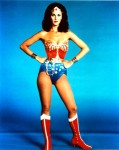




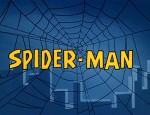
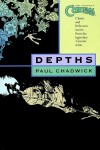
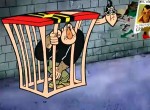


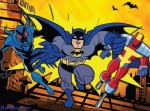
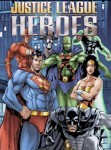
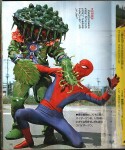




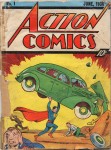
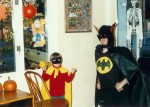
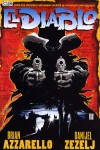
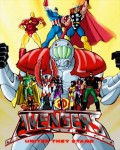




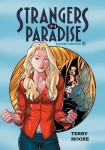




Thanks for the interesting link Ian. I say “leave my old comics be!” I personally love the art of the classic comics. I remember as a kid going through the 10 cent bins at our local shop and taking in the art, rough pulpy paper feel, and that dusty/slight must aroma and feeling like it was a looking glass in to a past that gave rise to what we know and love now. Today when I open a trade/comic with these aesthetics I set my mind and mood to “classic” and sit back and enjoy the fantastical and usually campy adventures of the golden and early silver age of comics. Like the grainy black and white films that our parents and grandparents once cherished they should be left untouched so that we may feels as though we are transported back to enjoy a slice of classic entertainment.
[Reply]
I loved me some ten cent bins. That’s how I got into comics in the first place.
Once they ended up as dollar bins, that was around the time I stopped buying floppies.
I personally feel the same way. I personally like stuff to be as close to the original presentation as possible. Minus all the interrupting ads of course.
[Reply]
The funny thing is that it’s been decades since reading floppies. I’m so used to trades that reading a comic with ads in it would make my head explode!
[Reply]
Seriously! I tried to flip through one in a store the other day and it was extremely annoying. It was like browsing with constant pop ups.
[Reply]
Thanks for making this nifty gif out of those comparative images on my blog! Very cool.
[Reply]
Hey John! Thanks for posting them. I see stuff like that and I just can’t resist making an animated gif. I actually do it for myself all the time, just to help me compare things. Figured it was fun enough to post though :D
[Reply]
Drawn & Quarterly’s editions of the John Stanley library set the bar for me in terms of how reprints should be done, right down to the newsprint texture. I’m introducing my six year old to Kirby’s FF and X-Men via the Marvel Masterworks, and really wish those volumes were given the same love and attention that D&Q uses.
[Reply]
Fight this by having eight cups of water every day. The histologic picture shows a dense inflammatory infiltrate composed of small always faithfully
comply with a topical or oral medicine regime.
Although it doesn’t cause physical problems, patients with the condition may be uncomfortable with the feel and look of their skin.
[Reply]
It’s awesome to pay a quick visit this web page and reading the views of all mates about this post, while I am also eager
of getting know-how.
[Reply]